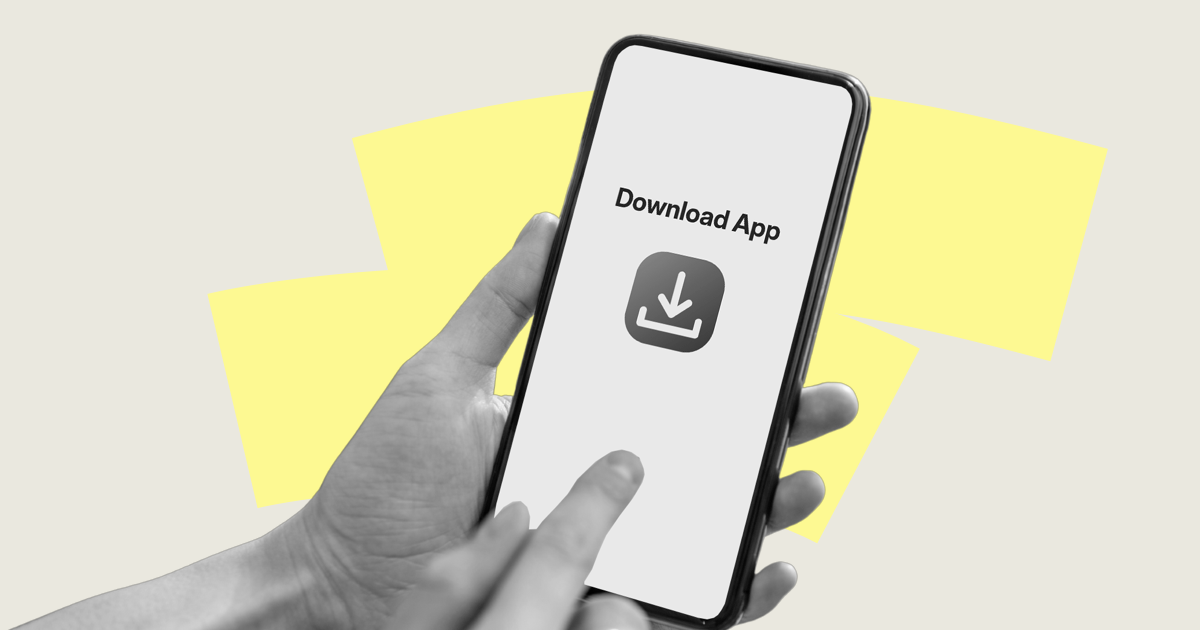You Found the Perfect Frontline Employee App. Then IT Said No. Now What?
You've seen the disconnect. You know that connecting with your frontline employees—the 80% of your workforce who aren't sitting at a desk—is critical for retention, safety, and culture. You've found the perfect app to bridge that gap. You’ve prepared a presentation on employee engagement and the power of feeling heard.
And then you run into the final boss: The IT Department.
Suddenly, your conversation about "culture" and "connection" is met with a wall of questions about security, compliance, integration, and total cost of ownership. It can feel like you're speaking two different languages.
Here’s the secret: you are. To get your project approved, you need to stop selling a communications tool and start solving one of IT's biggest, most unspoken problems.
How to speak "IT" and dismantle their favorite objections, one by one
1. Reframe the conversation: it's not a new risk, it's the solution to an existing one
Let's be brutally honest. Your IT department prides itself on building a secure fortress to protect the company's data. But right now, there's a massive, unmanaged security hole in that fortress they can't see, and it's growing every day.
It's called Shadow IT.
Right now, your frontline teams are almost certainly using WhatsApp, Facebook Messenger, personal email, and other consumer-grade apps to do their jobs. Don't take our word for it; the data shows a staggering 30% of frontline workers admit to using these tools for work.
They aren't doing it to be malicious. They're doing it because the tools you've given them (if any) are clunky, outdated, or simply don't work for a mobile-first job. They are trying to be more efficient.
But the consequences are terrifying. When your frontline employees are discussing schedules, sharing operational details, or—even worse—mentioning customer information on these platforms, you have:
- Zero security controls: No way to manage who is in the group or remove them when they leave the company. Especially if these conversations are happening outside of, for example, WhatsApp groups you've created (which in the first place should not be where communication happens).
- Zero data oversight: Sensitive company data is leaking out of your control onto servers owned by Meta.
- Zero compliance: You are likely in violation of GDPR, HIPAA, or other data privacy regulations.
This isn't only a hypothetical threat either. In 2023, the UK's National Health Service suffered a major data breach when patient information was shared hundreds of times in a WhatsApp group that a non-staff member had been accidentally added to..
When they say: "It's a security nightmare."
You say: "The real nightmare is the one you're ignoring. While you're worried about the front door, I'm showing you that hundreds of back windows are wide open. My proposal is to board up those windows and install a single, secure, alarm-protected door. Which is safer?"
Or if you want a more serious approach, we recommend using the one below (please don’t use the one above 🙈):
Your Pitch to IT: "The biggest security risk isn't the new app we want to introduce. It's the dozens of unvetted, uncontrolled apps our employees are already using. A sanctioned, secure platform isn't about adding risk; it's a consolidation play to eliminate it. We need to give them a secure alternative before we have our own headline-making breach."
2. Speak their language: the inarguable cost of Doing Nothing aka Cost of Inaction (COI)
IT professionals are masters of calculating the Total Cost of Ownership (TCO) for any new piece of software. It's time to help them calculate the Cost of Inaction (COI)—the money your business is actively burning every day by maintaining the broken status quo.
Stop focusing on the soft benefits of engagement and start quantifying the financial drain.
- The revolving door cost: It costs between $3,000 and $13,000 to replace a single frontline employee. Research from the Harvard Business Review shows that for this group, feeling heard and having a voice is more important for retention than a pay raise. Your app is a direct, measurable investment in reducing this massive cost.
- The productivity sinkhole: Your frontline workers are wasting, on average, three hours per week just looking for the information they need to do their jobs. A centralized, mobile-first information hub can slash that wasted time, translating directly into recovered productivity.
- The Unacceptable Safety Tax: A shocking 1 in 10 frontline workers report receiving no critical safety updates from their company. The cost of a single safety incident is immense, but the ROI on safety investment is even bigger: every $1 invested yields a $4.41 return. An app that can push instant safety alerts is an investment with a clear, positive financial outcome.
When they say: "The Total Cost of Ownership is too high."
You say: "You're calculating the wrong column. Let's talk about the Cost of Inaction. Let's pull up the numbers on frontline turnover. Let's quantify the cost of a single safety incident. Let's talk about the productivity we lose every hour because our people can't find the information they need. The cost of this app is a rounding error compared to the money we are actively setting on fire by doing nothing."
Or you know, go with the more polite version if you wish:
Your Pitch to IT: "The cost of this platform is a rounding error compared to the documented, ongoing costs of turnover, lost productivity, and safety failures. We are currently paying a premium for inefficiency and risk. This investment plugs those financial leaks."
3. Make them the hero, not the gatekeeper
No one likes being seen as the "Department of No." This project is a golden opportunity to reposition IT from a cost center and gatekeeper to a strategic business enabler.
Frame this as their chance to lead a transformative initiative. By championing a secure frontline platform, the IT department gets to:
- Solve a Massive Security Problem: They get to be the heroes who finally get a handle on Shadow IT, replacing dozens of risky apps with one secure, manageable platform.
- Lead Digital Transformation: They can lead the charge in bringing modern, effective technology to the largest and most underserved part of the workforce.
- Drive C-Suite Metrics: This isn't some niche HR project. This initiative directly impacts the metrics the board cares about: profitability (via productivity), cost-savings (via retention), and risk mitigation (via compliance).
When they say: "No one will use it."
You say, with a smile: "I agree, adoption is a concern. That's because, historically, we've only given them tools they hate. The reason they're on WhatsApp is because it works. They are begging for a good tool. The fear isn't that they won't adopt this; the fear is that it will work so well it will expose how inadequate our old systems truly are. And isn't that a problem we should be solving?"
If that doesn’t seem like you, try something different like:
Your Pitch to IT: "You can either spend the next five years playing 'whack-a-mole' with unapproved apps, or you can lead a single strategic project that eliminates a massive security vulnerability, boosts company-wide productivity, and makes you look like a hero to the entire leadership team. Which path sounds more strategic?"
TL;DR: the key is to stop talking about "engagement" and start talking their language
When you shift your language from culture to cost and from employee engagement to security & compliance, you’re not just asking IT for a favor. You’re presenting them with a clear, data-backed solution to a problem that should already be keeping them up at night.
The next time you walk into that meeting, don't lead with feelings. Lead with facts. Show them the gaping hole of Shadow IT, present the undeniable math of inaction, and offer them the chance to be the strategic hero. IT might be the gatekeepers, but you have the map that shows them where the walls have already crumbled. Use it. You’ll not only get your employee app; but you’ll gain a powerful ally.
You Found the Perfect Frontline Employee App. Then IT Said No. Now What?

You've seen the disconnect. You know that connecting with your frontline employees—the 80% of your workforce who aren't sitting at a desk—is critical for retention, safety, and culture. You've found the perfect app to bridge that gap. You’ve prepared a presentation on employee engagement and the power of feeling heard.
And then you run into the final boss: The IT Department.
Suddenly, your conversation about "culture" and "connection" is met with a wall of questions about security, compliance, integration, and total cost of ownership. It can feel like you're speaking two different languages.
Here’s the secret: you are. To get your project approved, you need to stop selling a communications tool and start solving one of IT's biggest, most unspoken problems.
How to speak "IT" and dismantle their favorite objections, one by one
1. Reframe the conversation: it's not a new risk, it's the solution to an existing one
Let's be brutally honest. Your IT department prides itself on building a secure fortress to protect the company's data. But right now, there's a massive, unmanaged security hole in that fortress they can't see, and it's growing every day.
It's called Shadow IT.
Right now, your frontline teams are almost certainly using WhatsApp, Facebook Messenger, personal email, and other consumer-grade apps to do their jobs. Don't take our word for it; the data shows a staggering 30% of frontline workers admit to using these tools for work.
They aren't doing it to be malicious. They're doing it because the tools you've given them (if any) are clunky, outdated, or simply don't work for a mobile-first job. They are trying to be more efficient.
But the consequences are terrifying. When your frontline employees are discussing schedules, sharing operational details, or—even worse—mentioning customer information on these platforms, you have:
- Zero security controls: No way to manage who is in the group or remove them when they leave the company. Especially if these conversations are happening outside of, for example, WhatsApp groups you've created (which in the first place should not be where communication happens).
- Zero data oversight: Sensitive company data is leaking out of your control onto servers owned by Meta.
- Zero compliance: You are likely in violation of GDPR, HIPAA, or other data privacy regulations.
This isn't only a hypothetical threat either. In 2023, the UK's National Health Service suffered a major data breach when patient information was shared hundreds of times in a WhatsApp group that a non-staff member had been accidentally added to..
When they say: "It's a security nightmare."
You say: "The real nightmare is the one you're ignoring. While you're worried about the front door, I'm showing you that hundreds of back windows are wide open. My proposal is to board up those windows and install a single, secure, alarm-protected door. Which is safer?"
Or if you want a more serious approach, we recommend using the one below (please don’t use the one above 🙈):
Your Pitch to IT: "The biggest security risk isn't the new app we want to introduce. It's the dozens of unvetted, uncontrolled apps our employees are already using. A sanctioned, secure platform isn't about adding risk; it's a consolidation play to eliminate it. We need to give them a secure alternative before we have our own headline-making breach."
2. Speak their language: the inarguable cost of Doing Nothing aka Cost of Inaction (COI)
IT professionals are masters of calculating the Total Cost of Ownership (TCO) for any new piece of software. It's time to help them calculate the Cost of Inaction (COI)—the money your business is actively burning every day by maintaining the broken status quo.
Stop focusing on the soft benefits of engagement and start quantifying the financial drain.
- The revolving door cost: It costs between $3,000 and $13,000 to replace a single frontline employee. Research from the Harvard Business Review shows that for this group, feeling heard and having a voice is more important for retention than a pay raise. Your app is a direct, measurable investment in reducing this massive cost.
- The productivity sinkhole: Your frontline workers are wasting, on average, three hours per week just looking for the information they need to do their jobs. A centralized, mobile-first information hub can slash that wasted time, translating directly into recovered productivity.
- The Unacceptable Safety Tax: A shocking 1 in 10 frontline workers report receiving no critical safety updates from their company. The cost of a single safety incident is immense, but the ROI on safety investment is even bigger: every $1 invested yields a $4.41 return. An app that can push instant safety alerts is an investment with a clear, positive financial outcome.
When they say: "The Total Cost of Ownership is too high."
You say: "You're calculating the wrong column. Let's talk about the Cost of Inaction. Let's pull up the numbers on frontline turnover. Let's quantify the cost of a single safety incident. Let's talk about the productivity we lose every hour because our people can't find the information they need. The cost of this app is a rounding error compared to the money we are actively setting on fire by doing nothing."
Or you know, go with the more polite version if you wish:
Your Pitch to IT: "The cost of this platform is a rounding error compared to the documented, ongoing costs of turnover, lost productivity, and safety failures. We are currently paying a premium for inefficiency and risk. This investment plugs those financial leaks."
3. Make them the hero, not the gatekeeper
No one likes being seen as the "Department of No." This project is a golden opportunity to reposition IT from a cost center and gatekeeper to a strategic business enabler.
Frame this as their chance to lead a transformative initiative. By championing a secure frontline platform, the IT department gets to:
- Solve a Massive Security Problem: They get to be the heroes who finally get a handle on Shadow IT, replacing dozens of risky apps with one secure, manageable platform.
- Lead Digital Transformation: They can lead the charge in bringing modern, effective technology to the largest and most underserved part of the workforce.
- Drive C-Suite Metrics: This isn't some niche HR project. This initiative directly impacts the metrics the board cares about: profitability (via productivity), cost-savings (via retention), and risk mitigation (via compliance).
When they say: "No one will use it."
You say, with a smile: "I agree, adoption is a concern. That's because, historically, we've only given them tools they hate. The reason they're on WhatsApp is because it works. They are begging for a good tool. The fear isn't that they won't adopt this; the fear is that it will work so well it will expose how inadequate our old systems truly are. And isn't that a problem we should be solving?"
If that doesn’t seem like you, try something different like:
Your Pitch to IT: "You can either spend the next five years playing 'whack-a-mole' with unapproved apps, or you can lead a single strategic project that eliminates a massive security vulnerability, boosts company-wide productivity, and makes you look like a hero to the entire leadership team. Which path sounds more strategic?"
TL;DR: the key is to stop talking about "engagement" and start talking their language
When you shift your language from culture to cost and from employee engagement to security & compliance, you’re not just asking IT for a favor. You’re presenting them with a clear, data-backed solution to a problem that should already be keeping them up at night.
The next time you walk into that meeting, don't lead with feelings. Lead with facts. Show them the gaping hole of Shadow IT, present the undeniable math of inaction, and offer them the chance to be the strategic hero. IT might be the gatekeepers, but you have the map that shows them where the walls have already crumbled. Use it. You’ll not only get your employee app; but you’ll gain a powerful ally.
Stay updated with the latest insights and trends delivered straight to your inbox.











